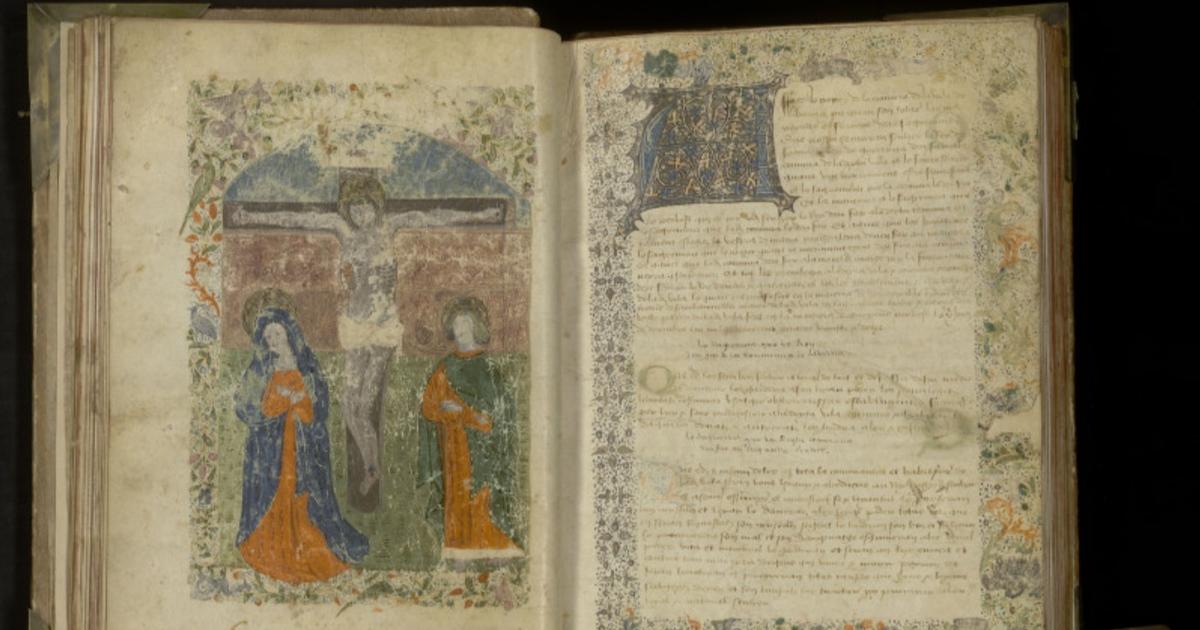- Click to share on Facebook (Opens in a new window)
- Click to share on Twitter (Opens in a new window)
- Click here to share on LinkedIn (Opens in a new window)
- Click to email a friend (Opens in a new window)
Remote work as an alternative in the middle of quarantines by coronavirus 4:18
(CNN) - “Quarantine” is a word used for the period of preventive isolation that those possibly exposed to the new coronavirus must face.
Thousands of people around the world are in quarantine as governments strive to prevent the virus from spreading. In China, thousands were forced to go to massive quarantine centers. In Italy, entire cities and towns were closed, which quarantined an estimated 100,000 people.
In the United States, there are quarantines for some first responders who helped infected patients in a nursing home in the Seattle area or attendees of a mitzvah bar in New York.
But although expanding quarantines may seem unprecedented, this is not the first time they are used to stop the spread of a deadly virus.
The word and practice have a dark and complex history that goes back to the Middle Ages.
- The odyssey of the platense doctor who is quarantined by the coronavirus
- What does the future hold for coronavirus? This is how three other infectious outbreaks like Ebola, SARS and H1N1 ended
During the influenza pandemic in 1918, places like these were the quarantine epicenters.
The bubonic plague in Venice (14th century)
The word "quarantine" itself is derived from the French word "quarantaine," which means "about 40," according to Merriam-Webster. The word was first used in English in 1617 to refer to the 40 days that a ship suspected of carrying a contagious disease remained isolated on the high seas.
QUARANTINE comes from the French 'quarantaine' ("about forty"), used in English the 1600s to refer to the forty days during which a ship suspected of carrying contagious disease is held in isolation from the shore. https://t.co/xGGOcGZhFl
- Merriam-Webster (@MerriamWebster) February 27, 2020
But the first instance of the institutionalized quarantine practice came much earlier, in the fourteenth century, according to the CDC.
The bubonic plague, or the so-called Black Death, devastated Europe between the years of 1347 and 1352, killing about 20 million people.
When the plague began to spread in 1347 in Venice, Italy, the ports began to reject ships suspected of coming from infected areas. The following year, the Venice authorities became the first to formalize the protection action. They closed their ports to suspicious ships and subjected legitimate travelers and ships to 40 days of isolation, according to the London Science Museum.
Congress takes quarantine in its own hands (1878)
As the United States developed in the 18th century, protection against contagious diseases fell under local and state jurisdictions, according to the Centers for Disease Control and Prevention.
After a 1793 yellow fever epidemic hit Philadelphia and killed 5,000 people, the city built a quarantine station called Lazaretto along the Delaware River that occupied 4 hectares, according to PBS.
But as yellow fever outbreaks continued, Congress took action and passed the National Quarantine Law in 1878.
The legislation did not conflict with the rights of the states, but paved the way for federal government participation in quarantine activities.
Local quarantine stations were slowly handed over to the federal government and the quarantine system was completely nationalized in 1921, according to the CDC.
So are the 3D printed quarantine rooms 0:34The court rules that the quarantine of Chinese was racist (1900)
In March 1900, Chick Gin, the Chinese owner of a sawmill, died of bubonic plague in San Francisco's Chinatown, according to PBS.
Authorities immediately cordoned off the 15-block neighborhood, quarantined about 25,000 Chinese residents and closed businesses owned by people who were not white.
Later that year, a court ruled that the quarantine was racist and lifted it.
The judge said health officials acted with a "look of hate and inequality," PBS said.
An epidemic of bubonic plague (1901)
In Cape Town, South Africa, in 1901, an epidemic of bubonic plague forced almost all of the city's black African population to go to a quarantine camp.
"This camp and this eviction practice would become part of the plan for future forced evictions and the model for racially segregated South African peoples in the previous period and during the era of apartheid," Alexandre White, assistant professor of sociology, told CNN and history of medicine at John Hopkins University.
Women are arrested to prevent the spread of venereal diseases (1917)
During World War I, federal officials learned that a large percentage of their soldiers were infected with syphilis or gonorrhea, according to The History Channel.
About 20,000 women, most of them infected with venereal diseases, were imprisoned or detained without being formally charged with a crime, according to The New York Times.
Some were prostitutes, while others were "charity girls" who had sex in exchange for meals or entertainment.
They were surrounded by barbed wire and guards and were often forced to undergo humiliating medical procedures, The New York Times reported.
Historian Allan Brandt called this effort "the most concerted attack on civil liberties in the name of public health in the history of the United States," according to PBS.
The CDC officially enters the scene (1967)
The United States Department of Health, Education and Welfare transferred the quarantine responsibilities to the National Center for Communicable Diseases, which is now the United States Center for Disease Control and Prevention.
When the CDC took over, there were quarantine stations in all ports, international airports and major border crossings.
In the 1970s, the CDC reduced the number of quarantine stations from 55 to 8 because infectious diseases were thought to be "a thing of the past," according to the CDC. But after the September 11 terrorist attacks that aroused fears about bioterrorism, after the 2003 SARS outbreak, quarantine stations increased to 20.
The lesson to learn today
Quarantine is one of the most aggressive responses to an epidemic that a government can take, according to White, the medical historian of John Hopkins.
And while the practice may be effective in preventing the spread of an epidemic, history has suggested that it is often the most marginalized groups that are unfairly attacked.
Today there is no official quarantine of the government of the entire Chinatown as there were 120 years ago. But in the midst of the coronavirus outbreak, Chinese companies are still suffering. In New York and elsewhere, Chinese restaurants and stores have seen a sharp decline in customers who stay away from fear because the disease originated in China.
Experts say that rampant ignorance and misinformation about the new coronavirus have also led to racist and xenophobic attacks against anyone in the United States who looks like East Asia.
"In these times," White told CNN, "we have to be more cautious and recognize that reducing people or cultures through the lens of the spread of epidemics is not a totally accurate way of understanding our fellow men." .
coronavirus Quarantine








